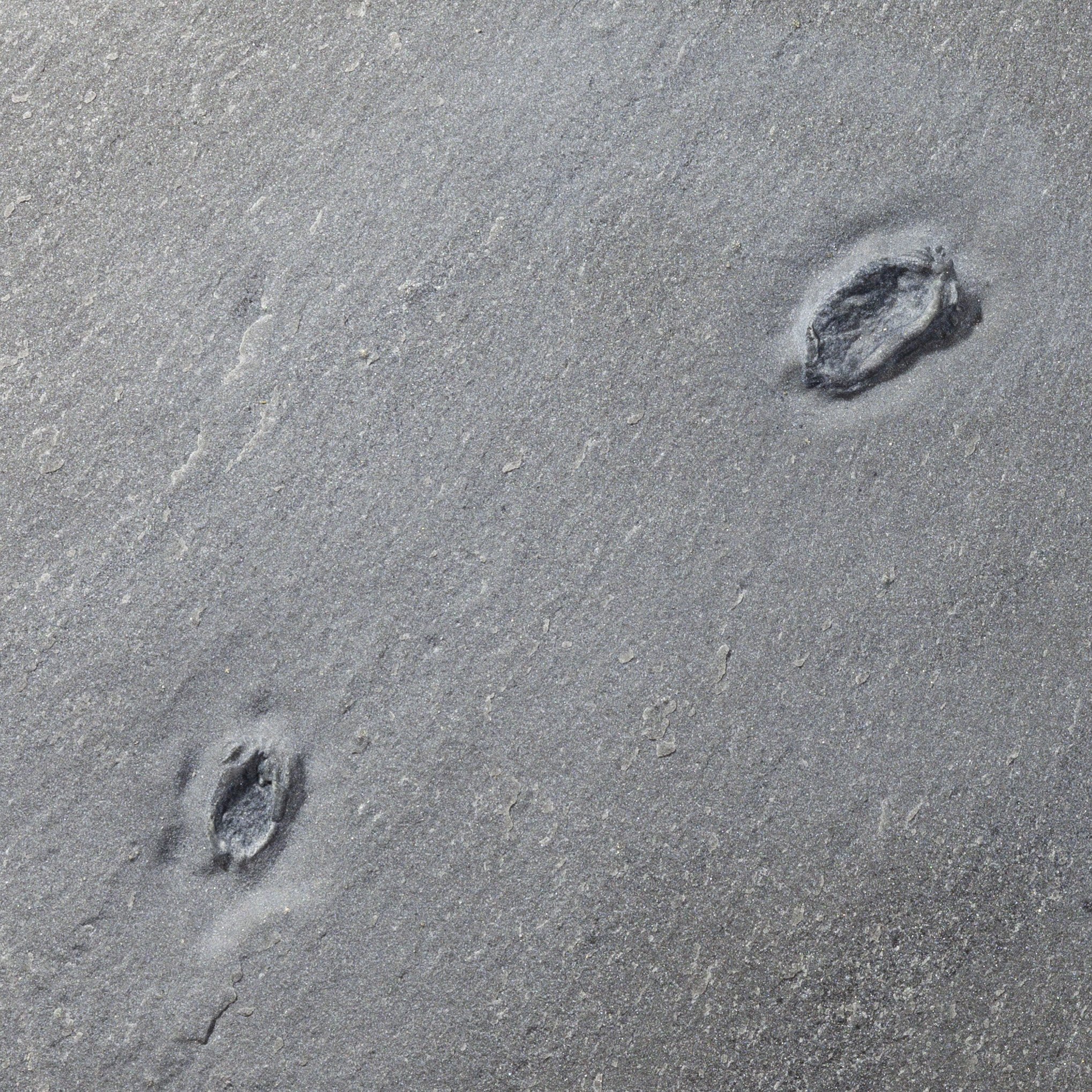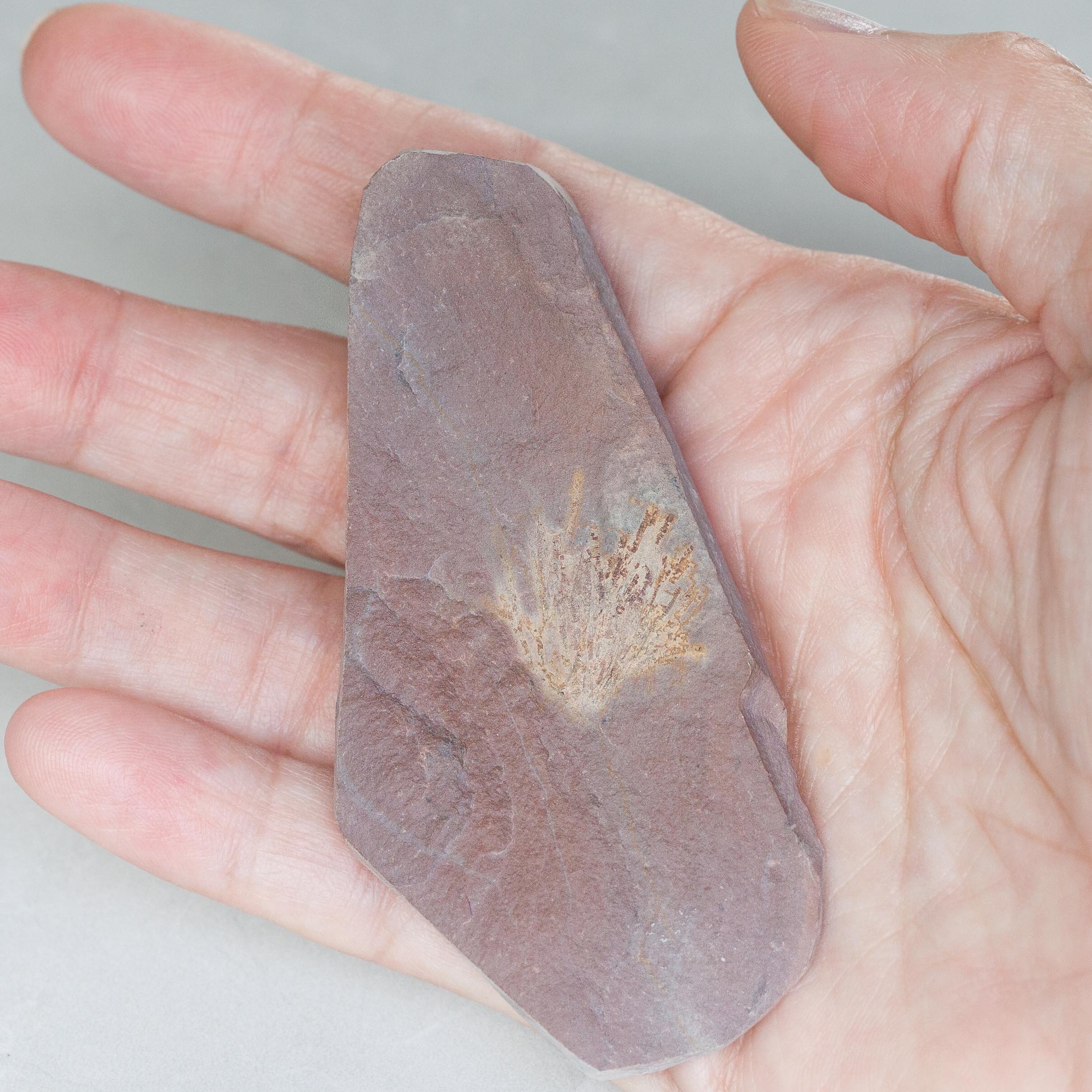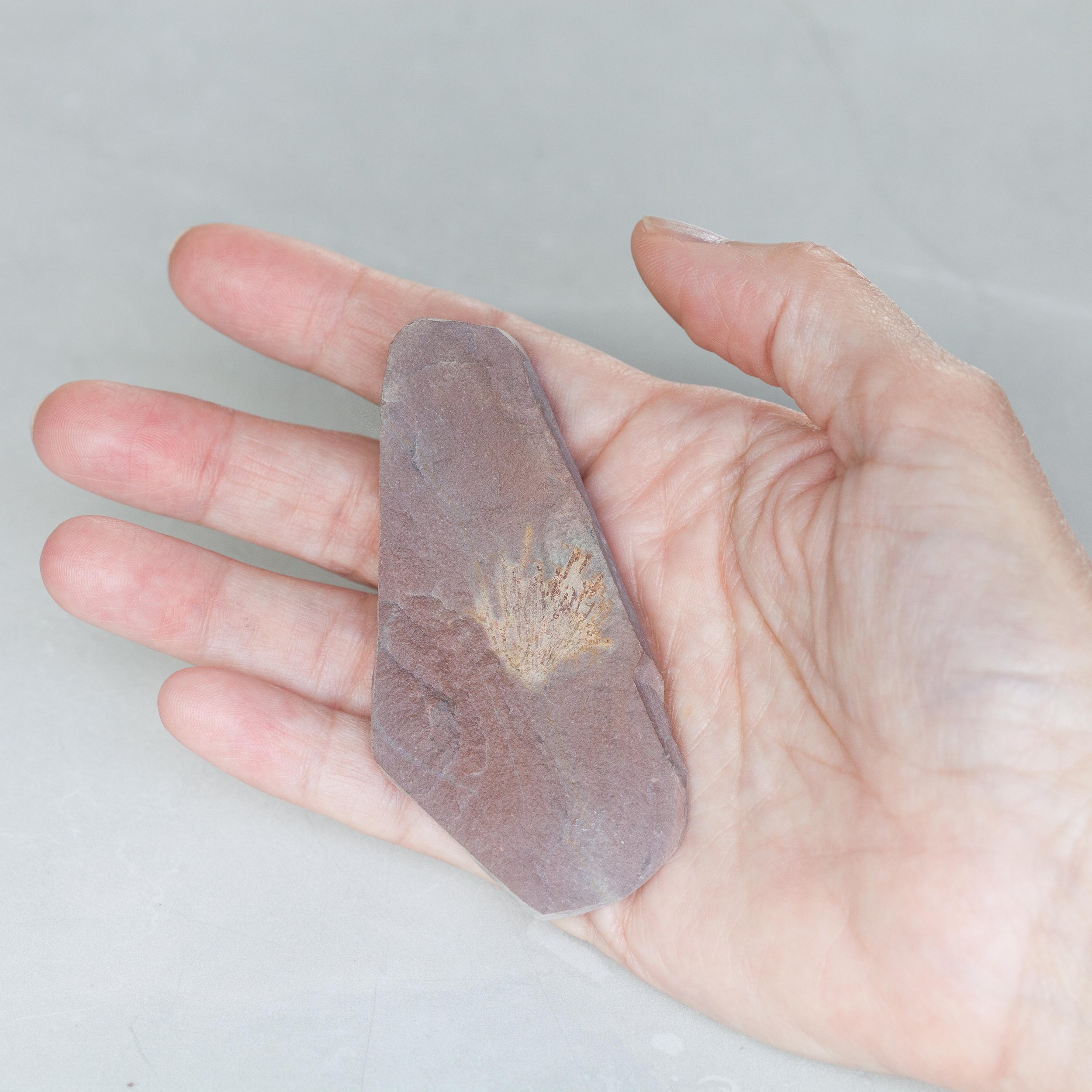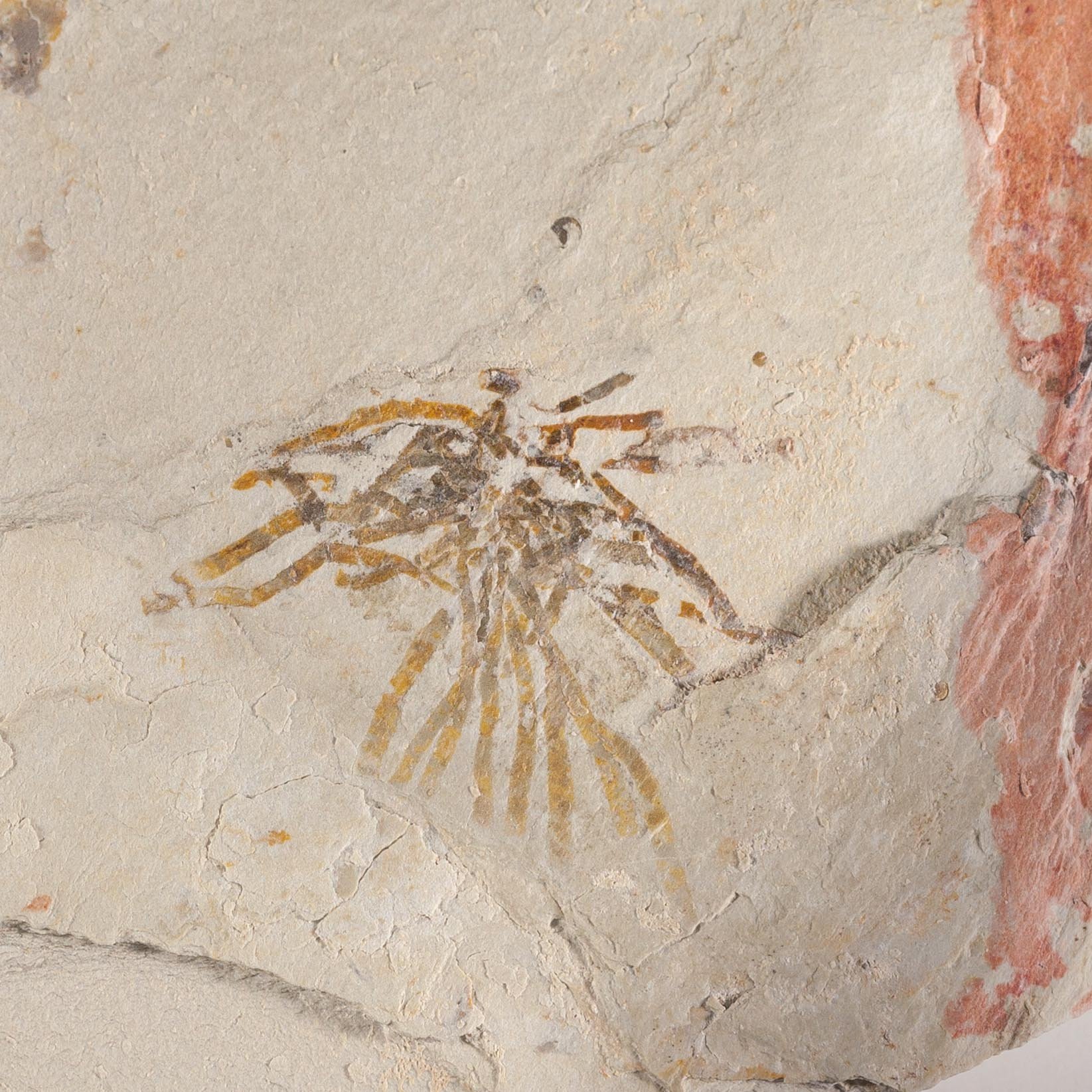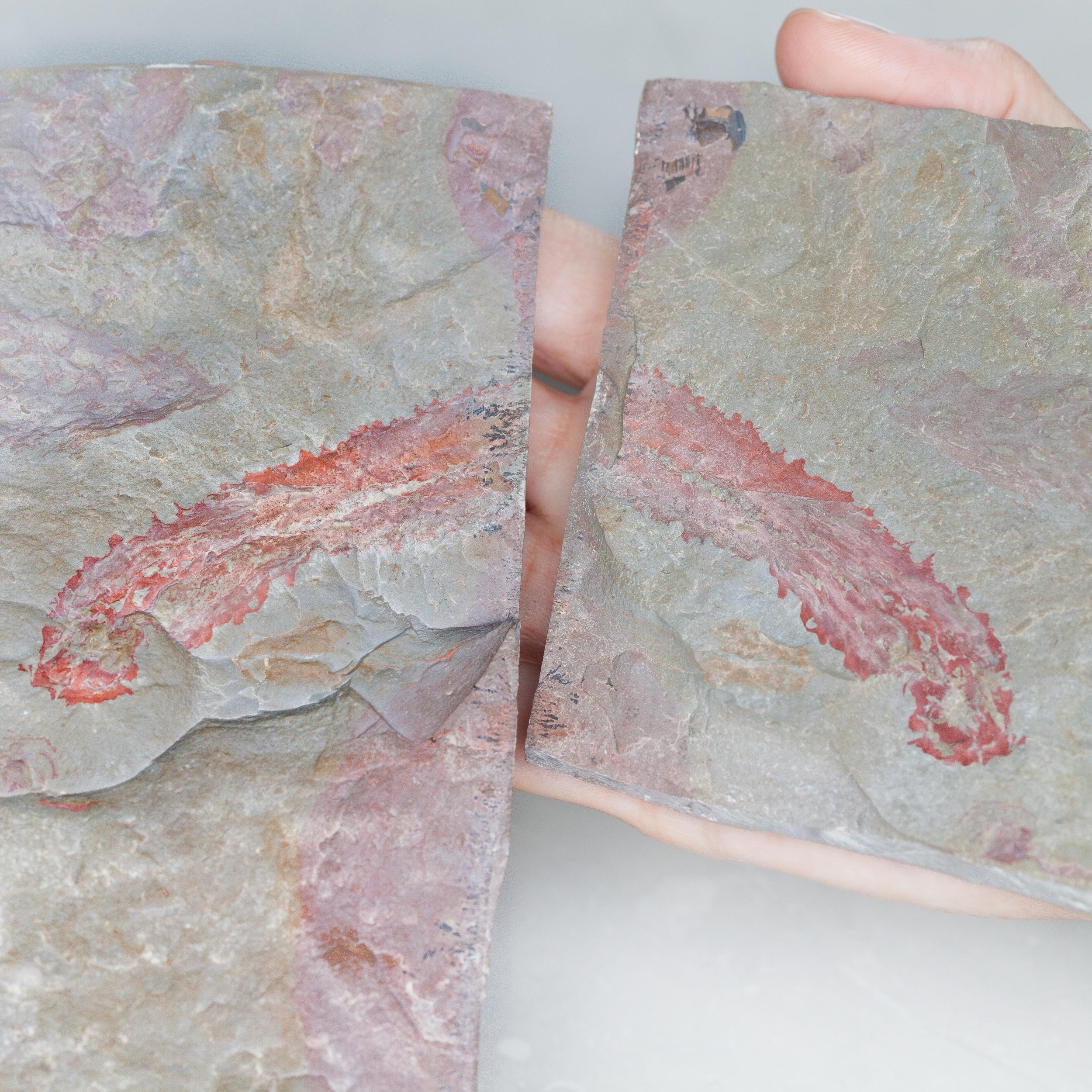 Image 1 of 3
Image 1 of 3

 Image 2 of 3
Image 2 of 3

 Image 3 of 3
Image 3 of 3




Margaretia sp.
Vendor: Gold Bugs
SKU Number: SQ4223760
Stunning and very large example of Margaretia dorus, from the Middle Cambrian, Wheeler Shale Formation - “Red Beds”, Utah. This specimen comes as a split pair on natural colorful matrix.
Margaretia dorus is considered by some to be the construct of the tube building worm Oesia, based on the research from a recent publication. These red examples are exceptional for their high contrast of color and detail of preservation. These fossils are normally poorly preserved and are very faint.
Margaretia is a hemichordate. Hemichordates appear in the Lower or Middle Cambrian and include two main classes: Enteropneusta (acorn worms - detritus feeders, eating sand or mud and extracting organic detritus), and Pterobranchia (small colonial worm-like filter-feeders).
Full dimensions are listed below (Dimensions are provided for the larger of the 2 pieces).
Vendor: Gold Bugs
SKU Number: SQ4223760
Stunning and very large example of Margaretia dorus, from the Middle Cambrian, Wheeler Shale Formation - “Red Beds”, Utah. This specimen comes as a split pair on natural colorful matrix.
Margaretia dorus is considered by some to be the construct of the tube building worm Oesia, based on the research from a recent publication. These red examples are exceptional for their high contrast of color and detail of preservation. These fossils are normally poorly preserved and are very faint.
Margaretia is a hemichordate. Hemichordates appear in the Lower or Middle Cambrian and include two main classes: Enteropneusta (acorn worms - detritus feeders, eating sand or mud and extracting organic detritus), and Pterobranchia (small colonial worm-like filter-feeders).
Full dimensions are listed below (Dimensions are provided for the larger of the 2 pieces).
Vendor: Gold Bugs
SKU Number: SQ4223760
Stunning and very large example of Margaretia dorus, from the Middle Cambrian, Wheeler Shale Formation - “Red Beds”, Utah. This specimen comes as a split pair on natural colorful matrix.
Margaretia dorus is considered by some to be the construct of the tube building worm Oesia, based on the research from a recent publication. These red examples are exceptional for their high contrast of color and detail of preservation. These fossils are normally poorly preserved and are very faint.
Margaretia is a hemichordate. Hemichordates appear in the Lower or Middle Cambrian and include two main classes: Enteropneusta (acorn worms - detritus feeders, eating sand or mud and extracting organic detritus), and Pterobranchia (small colonial worm-like filter-feeders).
Full dimensions are listed below (Dimensions are provided for the larger of the 2 pieces).
Additional Information
Margaretia is a Burgess Shale fauna from the Cambrian Period that is also found in the Wheeler Shale Lagerstätte of Utah.
Margaretia belongs to the the class: Enteropneusta, these are acorn worms, detritus feeders eating sand or mud and extracting organic detritus.
They live in U-shaped burrows on the sea-bed, from the shoreline down to a depth of 10,000 ft. (3,050 m). The worms lie there with the proboscis sticking out of one opening in the burrow. Acorn worms are generally slow burrowers. To obtain food, many acorn worms swallow sand or mud that contains organic matter and microorganisms in the manner of earthworms (this is known as deposit feeding). At low tide, they stick out their rear ends at the surface and excrete coils of processed sediments (casts). Another method that some acorn worms use to obtain food is to collect suspended particles of organic matter and microbes from the water. This is known as suspension feeding.
References:





